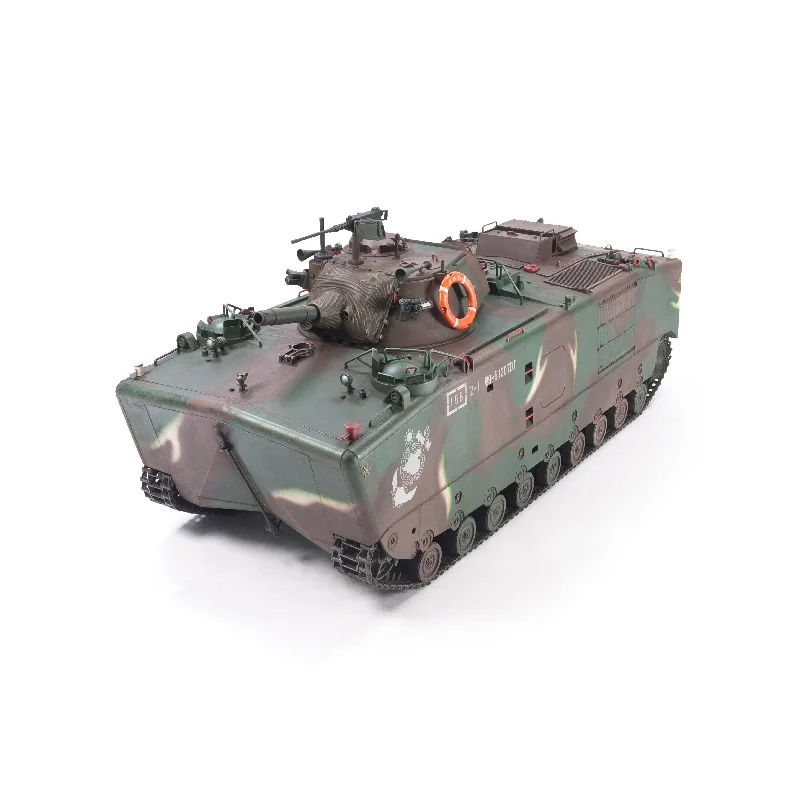After the end of World War II, the production capacity of the U.S. military industry was released, and abundant resources were used to develop more mature designs to replace the same type of wartime equipment with simple structures and easy production.
Since 1946 , the US Navy Bureau of Ships has invited private mechanical engineering companies to propose new designs for tracked landing vehicles (LVT) . Different from the body design that lacked armor protection during World War II, the amphibious landing vehicle designed at this time has adopted a sealed box-shaped body, inherited some accessories from the combat vehicle, and replaced the more reliable tracks and suspension devices. However, these vehicles often face the fate of being abandoned due to factors such as excessive weight, development delays, and power transmission problems.
When the Korean War broke out in June 1950 , the U.S. military still lacked a new generation of tracked landing vehicles and could only hastily modify the LVT-3 and LVT(A)-5 left over from World War II and put them into use for the Incheon landing in September. Combat. In December of the same year, the Bureau of Shipping commissioned Borg Warner Company to design an amphibious landing vehicle. The new vehicle absorbed the results of earlier research and development, adopted the engine and transmission system that had been successfully developed on the M46 tank, and completed the manufacturing of the prototype in August 1951 . In order to improve the vehicle's seaworthiness on the ocean , a huge box-shaped body that can carry 34 fully armed soldiers was designed . It was assigned the number LVTP5 in 1952 and was jointly produced by five companies including FMC Corporation . It entered service in the U.S. Marine Corps in 1953 .
Developed at the same time as LVTP5 , the LVTP5 fire support vehicle LVTH6 is equipped with a turret equipped with a 24 -caliber 105mm howitzer on the same body as the LVTP5 . Operated by a crew of seven, LVTH6 is capable of carrying 151 shells when moving on land , reduced to 100 shells on the water. It entered military service in 1957 and a total of 210 vehicles were produced.
- Brand new H-6 turret.
- Brand new metal 105mm howitzer barrel.
- ROCMC dedicated smoke grenade launchers.
- Psychological warfare loudspeaker system.
- ROCMC dedicated lifebuoy.
- Decal containing USMC, ROCMC, PMC.

